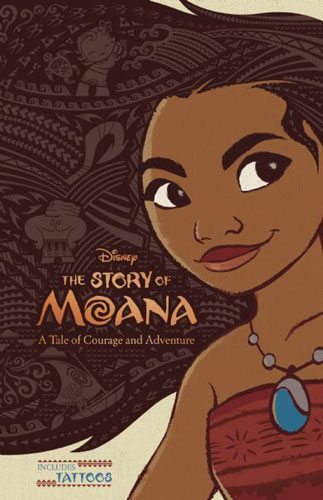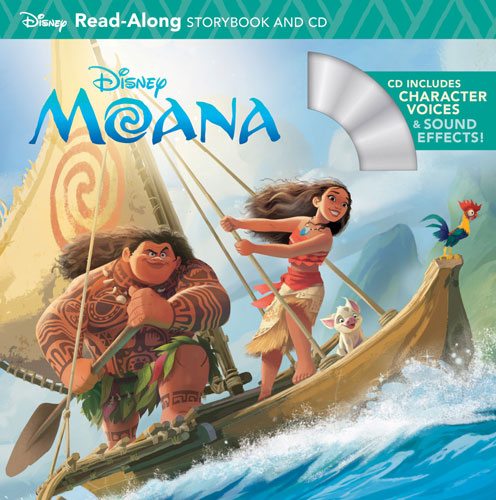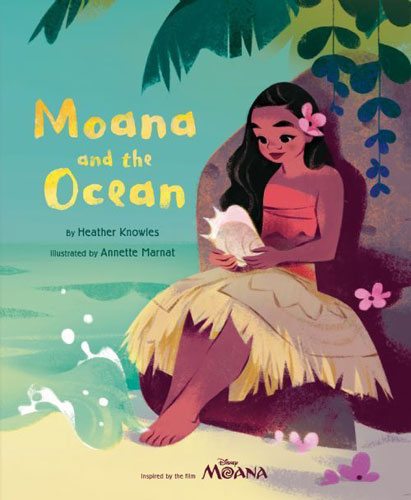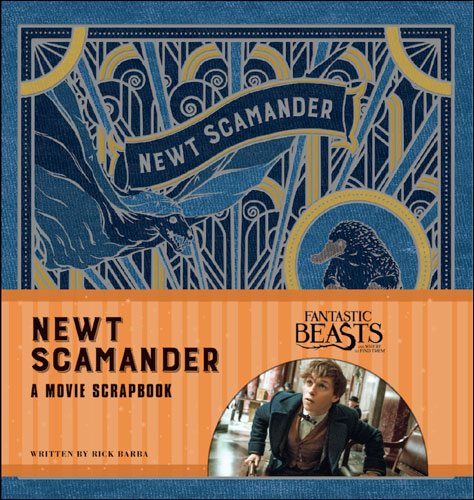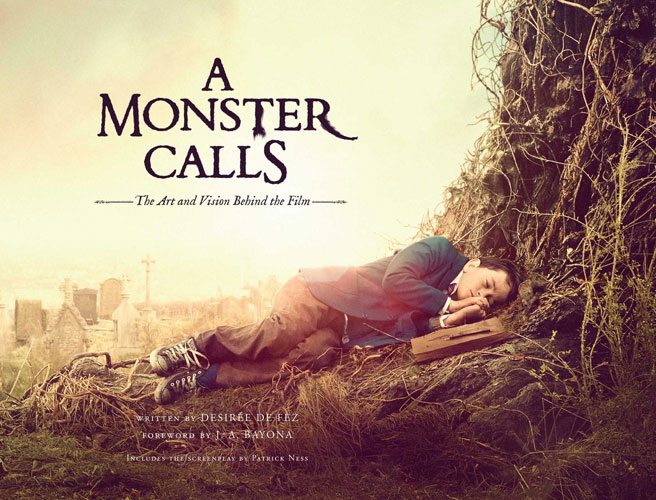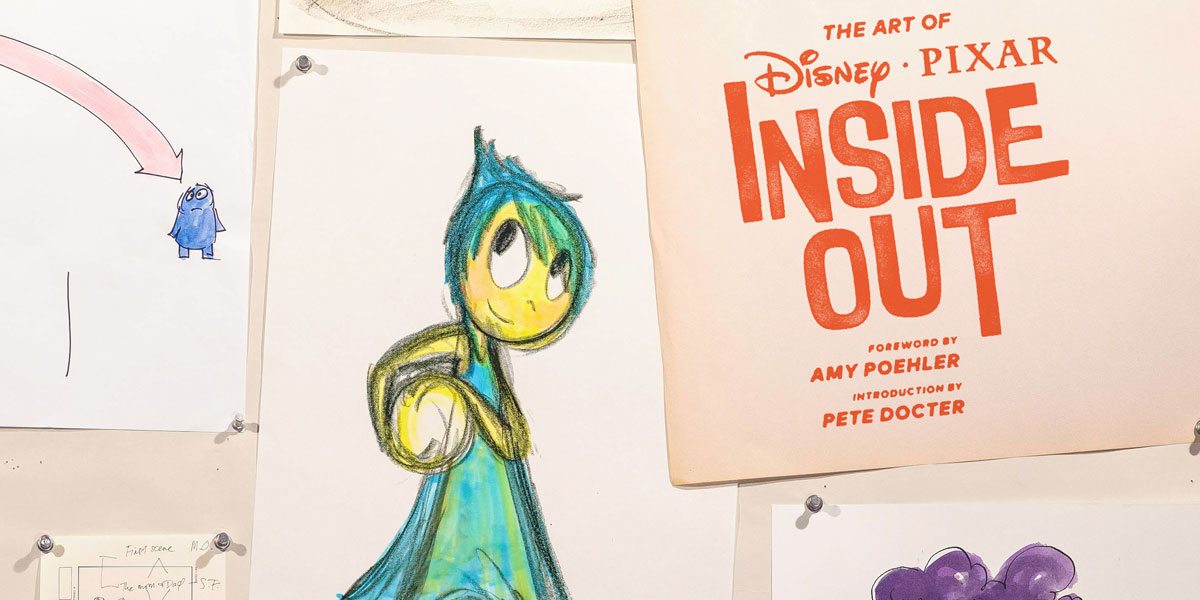My family went to see Moana recently and really enjoyed it—and we can continue to immerse ourselves in the world of Motonui through these books.
The Story of Moana adapted by Kari Sutherland, artwork by the Disney Storybook Art Team
This is a chapter book version of the film that stays pretty true to the film, though there are some embellishments and changes so it’s not exactly the same. (And, of course, there’s no music.) There are also some short folktales sprinkled throughout the book, inspired by stories from Oceania and adapted to fit with Moana’s tale. The book doesn’t have a lot of pictures, but does include spot illustrations that look like Maui’s tattoos, and the hardcover book is really lovely, with no dust jacket and foil accents. There’s also a sheet of foil temporary tattoos at the back of the book. This one is good for middle-grade readers who want to re-experience the movie as a novel.
This read-along picture book hits all of the big plot points of the movie, but in an abbreviated form. (For instance, the entire Kakamora attack lasts only one page.) The included CD (with the “turn the page” sound) is narrated by Rena Owen but also includes clips of the cast from the movie for dialogue, so kids who have seen the movie once will really appreciate the audio. As with the other Disney read-along books, it does include the whole plot, so if you like to avoid spoilers until seeing the movie, I’d recommend waiting to read this one. On the other hand, for kids who may get a little scared in the theater, the read-along book is a nice warm-up to the real thing, and they’ll know what’s coming ahead of time.
Moana and the Ocean by Heather Knowles, illustrated by Annette Marnat
This picture book is told from the perspective of the ocean, and follows Moana from when she was a toddler through her adventures growing up. It doesn’t follow the movie exactly, but if you’ve seen the movie you’ll recognize moments throughout the book. The story is told with few words, relying mostly on Marnat’s illustrations, which aren’t designed to look strictly like the movie.
The Art of Moana by Jessica Julius and Maggie Malone
As soon as we got back from the theater, I read through The Art of Moana to read up on how characters were designed, how the story was developed, and what challenges the filmmakers faced in making Moana. The filmmakers spent a lot of time doing research and visiting the Pacific Islands (tough work, right?) to get the details right and make sure that the movie reflected the culture and values of the people portrayed, even though much of it is fictionalized. For instance, the Disney team had originally designed Maui to be bald—but the people they visited said, no, Maui has a head full of hair.
The book even goes into the design of the islands, the buildings on the islands, and the different types of boats seen in the film. As you’d expect, there are sketches, storyboards, color tests, photographs, and other concept art. There aren’t actually that many screenshots from the movie, really. You also get hints here and there about earlier story developments that were scrapped. One thing I didn’t see mentioned was that when Maui turns into his various animal forms, his fishhook becomes part of the animal’s pattern—something I didn’t really notice until near the end of the movie—and so I wish they’d shown some details of that.
If you enjoyed the film and you want to dig into some of the culture behind it and what went into creating the movie, this book is a great way to do that.
Now, while I’m at it, I’ve got a few other movie-based books to share with you today.
Fantastic Beasts and Where to Find Them: Newt Scamander: A Movie Scrapbook by Rick Barba
Now, I have to admit that I haven’t actually seen Fantastic Beasts yet, but this little book was a fun overview that doesn’t give away too much of the plot. It’s a short book and doesn’t go into as much depth as an “art of” book, but includes little tucked-in ephemera like maps, luggage tags, portrait cards, and things like that. There are brief introductions to the major characters, a bestiary showing off several of the beasts in the film, and a few notes here and there about the making of the film. It’s a pretty book that would make a nice gift, but doesn’t go into detail for those who really want to know more about how the movie was made.

This pop-up book is designed to open like a cabinet of curiosities: the two “doors” swing open from the center, and you stand the book up as the pages flip down from the top, revealing one scene after another. There are only five scenes depicted—three from the Harry Potter series (such as the Sorting Hat) and two from Fantastic Beasts, but they are pretty elaborate, with flaps that slide out or fold down to tell a little bit about each scene. Two elastic straps hold up the pages until you’re ready to open them up, and the cabinet doors have magnetic clasps to hold them shut.
A Monster Calls: The Art and Vision Behind the Film by Desirée de Fez
Patrick Ness’s A Monster Calls is an amazing book that deals with some very tough subjects: the main character, Conor, has a terminally ill mother. I mentioned it in this Stack Overflow column, but GeekMom Jackie Reeve also has a more in-depth (and personal) take on it. The film based on the book comes out later this month, and it looks amazing and intense.
This book, as the title implies, is not just about the art of the film, but also about the creative vision that drives it. There is concept art and a lot of photography from the making of the film, but there are also interviews with the actors, costume designers, production designers, and so on. The book even includes the entire shooting script by Patrick Ness, paired with storyboard images. It’s a remarkable story and I think this book will make a great pairing with the film. Since I’d already read the original novel, I went ahead and read through this book knowing that there wouldn’t be too much spoiled.
Star Wars Art: Ralph McQuarrie
Ralph McQuarrie was an essential part of the Star Wars universe—he worked closely with George Lucas to design the look of everything from the characters to the environments. Two years ago some of his Star Wars artwork was made into a picture book retelling of the original trilogy (written by Tony DiTerlizzi), and now Abrams Books has published this gorgeous (and enormous) two-volume set. It’s the most complete collection of McQuarrie’s Star Wars art ever published, and also includes interviews and essays about McQuarrie.
The large format really shows off the artwork, and I particularly enjoyed seeing multiple iterations of the same image, from thumbnail sketches to paintings to revised paintings. There’s so much packed into the book—images are paired with the sections of the script that inspired them, along with quotes from George Lucas and Ralph McQuarrie (and some others) about the images. It’s fun to see how character designs evolved. You’ll recognize many images that made it into the final films, as well as many that were cut or redesigned.
Each of the two volumes is 400 pages, so it’s a lot to take in, but this is definitely a set every Star Wars fan will want to pore over.
Disclosure: I received review copies of these books.

